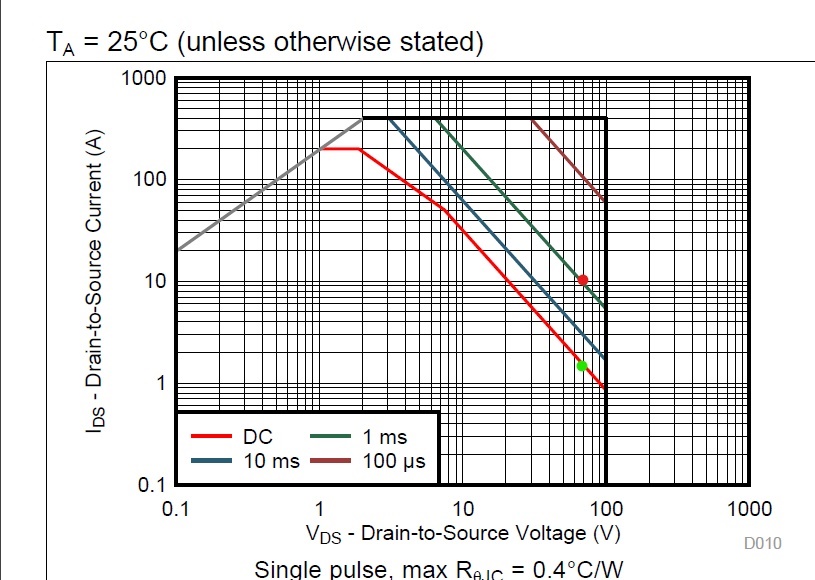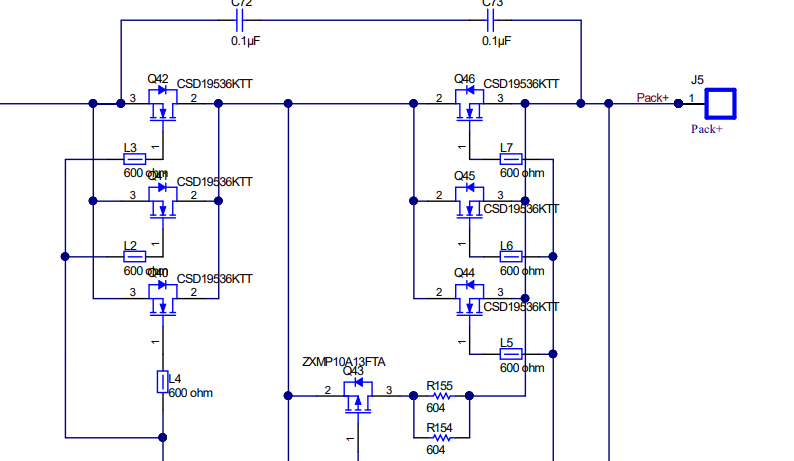Other Parts Discussed in Thread: CSD19536KTT, , BQ76200
Hello;
TIDA-010074 uses "CSD19536KTT" Three , N-CH MOSFET, 100 V, 200 A .The Document says that it can handle 72 V and 30 A Discharge current .. So my question is if we look at this mosfet SOA the max Current at this voltage is 1A . If we uses a formula "Trise/(Vds*Rth)" i get 6.25 A and if we mark this Vds and Id on th SOA curve the point is above DC line. That means if we want the same current then Vds need to come down nearly to 20 V.. So want to know where is this 30 A figure comming from or 10A per MOSFET Branch..




